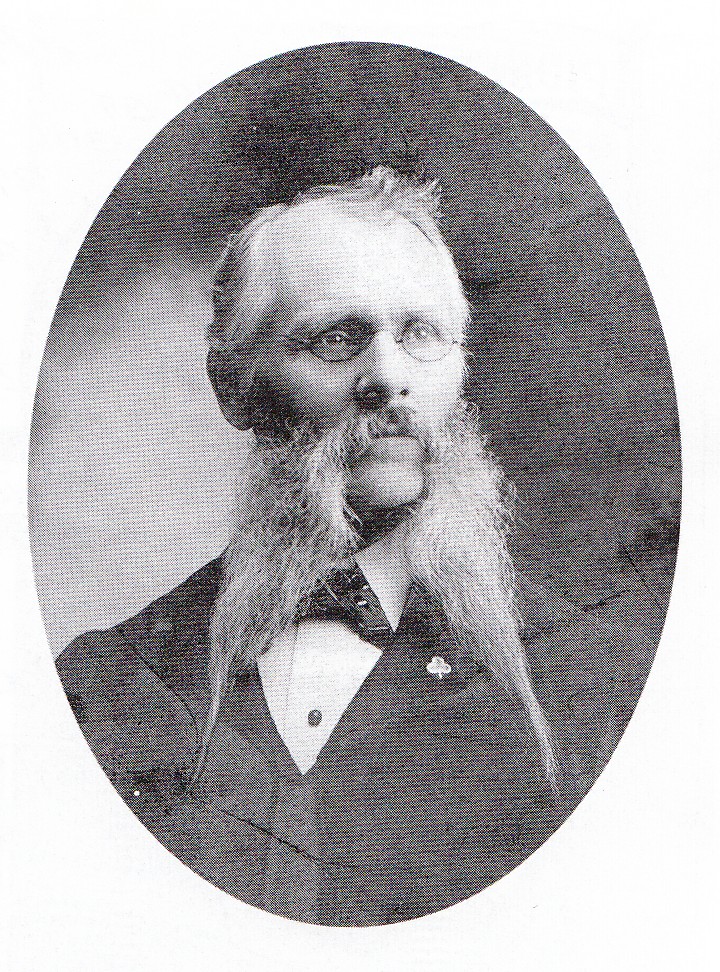Obituary of Albert G. Cummings – Millersburg Inventor of the Aeroplane, 1896
Posted By Norman Gasbarro on March 9, 2015
Albert G. Cummings (1844-1911), inventor, died at his home in Millersburg, Dauphin County. During the Civil War, he served in a New Hampshire regiment. Previously on this blog, he was profiled in a post entitled More Millersburg Area Portraits Found (Part 2). Today, his obituary is presented as originally published in the Harrisburg Patriot of 2 August 1911.
CAPT. CUMMINGS, INVENTOR DIES
Prominent Millersburg Resident passes Away After Year’s Illness
HE WAS A REFORMER
Captain Albert G. Cummings, much of whose life was spent in this city where he designed the old iron Mulberry Street Bridge, erected much machinery for the Pennsylvania Steel Company and invented a biplane, died at his home in Millersburg, Monday night. He was 67 years old and been ill of a complication of diseases for a year.
His last appearance in public position was last fall when at the head of the Keystone Party in the Upper End, he swept up majorities everywhere. To his leadership at that time, independents lay the credit for the big vote.
From the start he was a creative mind. His biplane was made back in 1896. It had propellers and the model could be operated. He filed half his plans at Washington, but fearful that his secret may be known, declined to file the other half, and was refused patents. It is said that the principle on which he worked was that used by subsequent aeroplane builders.
Born in New England
Captain Cummings was born 18 November 1844 at East Lebanon, New Hampshire, being the son of Daniel Cummings and Emma Cummings. He learned the machinist’s trade with his father. At the outbreak of the Civil War he enlisted with with two brothers in the Union Army and served throughout. He was captain of Company F, Fifth New Hampshire [5th New Hampshire Infantry]. He was wounded in the Battles of Fredericksburg and Chancellorsville. He was Captain at the Battle of Gettysburg, and was wounded. He also participated in the Battles of Malvern Hill and Forlorn Hope, and was a member of Post 58, Grand Army of the Republic of this city [Harrisburg].
In 1867 he accepted a position with the Pennsylvania Steel Company and was later made master mechanic.
Three years later he went to Chicago where he was in charge of the construction of the North Chicago Rolling Mill, Bessemer Steel Department. In 1878, he returned to Harrisburg and, while with the Jackson Interlocking and Switch Company, invented an interlocking switch which was later manufactured by the Pennsylvania Steel Company.
Designed Bridge
He made a plan for a proposed bridge at Mulberry Street, his idea being to divert by a curve and make its entrance at Fourth Street. Copies of the plan were introduced into Councils and it was passed, the iron bridge being the result.
He removed eight years ago to Millersburg, where he had a farm, and has since resided there. Recently he built a machine for use at life saving stations. It consisted of a boat with inflated wheels. He gave a demonstration before a party of business men several years ago.
Surviving are two brothers, Perley M. Cummings, of New Boston, Texas and Homer H. Cummings of 328 Summit Street; two sisters, Miss Emma M. Cummings, and Miss Minerva Cummings, of Enfield, New Hampshire; two sons, Wilbur C. Cummings, and Howard A. Cummings, and two daughters, Mrs. Eva Polk, of Millersburg, and Miss Alice Cummings of this city [Harrisburg].
——————————–
The obituary was transcribed from on-line resources of the Free Library of Philadelphia.
 ;
;



Comments